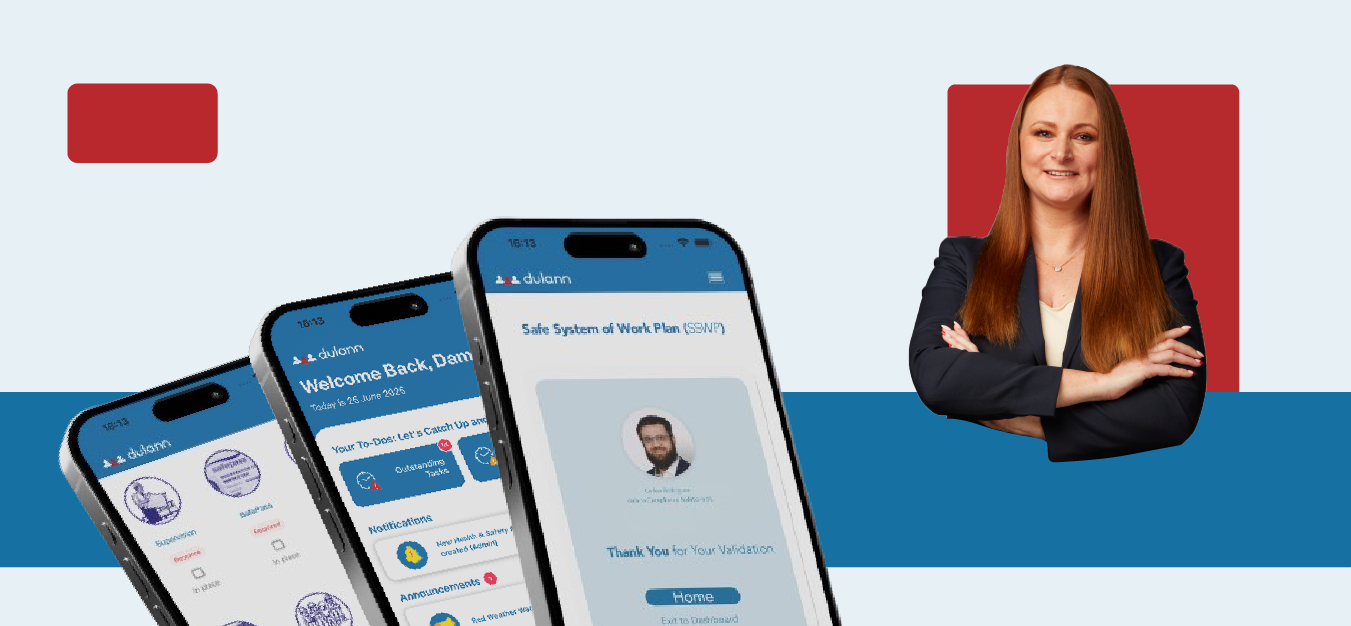2025 is shaping up to be a pivotal year for workplace safety in Ireland. With new regulations, evolving EU directives, and a growing emphasis on digital tools and software, employers and Safety Managers must stay proactive. From construction sites to healthcare settings, the rules are changing - and staying ahead is essential not just for compliance, but for protecting workers and building a culture of safety.
1. New Quarry Regulations Signed Into Law - 11 September 2025
The Safety, Health and Welfare at Work (Quarries) Regulations 2025 will come into force on 1 January 2026. Key changes include stricter safeguards for explosives, a requirement to notify the HSA when work ceases temporarily, and the ability to submit forms online. Quarry operators should act now to prepare.
2. Construction Safety Action Plan Launched - 17 September 2025
The Construction Safety Partnership Advisory Committee (CSPAC) announced a new three-year plan (2025–2027). Priorities include:
- Tackling traditional hazards and emerging risks (e.g., hazardous substances).
- Strengthening the role of Safety Reps.
- Providing targeted supports for SMEs and self-employed workers.
- Standardising practices and encouraging digital tools: CSPAC is actively promoting the adoption of digital platforms and software to improve safety management on construction sites. This includes:
- Digital safety reporting and incident tracking to identify hazards quickly.
- Online training modules for workers, allowing consistent up skilling across sites.
- Mobile risk assessment apps that let supervisors update hazards in real time and alert staff instantly.
- Integration with compliance systems, making it easier to generate safety statements, track inspections, and store documentation digitally.
By embracing these tools, construction companies can reduce paperwork, improve transparency, and enhance accountability, while also meeting the HSA’s expectations for modernised safety practices.
3. HSA Strategy Now in Implementation - 2025–2027
The Health & Safety Authority’s three-year strategy is now being rolled out across workplaces. Expect to see:
- More inspections targeting high-risk sectors.
- A stronger focus on new technologies (AI, robotics, digital platforms).
- Campaigns on chemical safety and product regulation.
- Greater emphasis on education and workforce awareness.
It is also worth noting that the Irish Government has announced the appointment of the Health and Safety Authority (HSA) as a designated competent authority responsible for enforcing the EU Artificial Intelligence (AI) Act.
Current HSA inspections include:
- Forestry Sector Inspections (from 8 September 2025): Nationwide reviews of forestry operations, focusing on machinery safety, risk assessments, PPE, and contractor training.
- National Ploughing Championships Safety Awareness (16–18 September 2025): On-site campaigns highlighting farm hazards, machinery safety, working at height, and protection for older farmers.
- October 2025 Inspection Focus: HSA has indicated that upcoming campaigns will focus on construction site safety, manual handling practices, and chemical hazard management, reflecting continued attention to high-risk sectors.
These campaigns underline that HSA inspections are not just regulatory checks - they are a proactive push for safer workplaces across Ireland.
4. Asbestos Directive Being Transposed - 2025
Directive (EU) 2023/2668 was adopted in late 2023, but 2025 is the year it’s being written into Irish law. The directive lowers the exposure limit for asbestos to 0.01 fibres per cm³, introduces stricter measurement methods, and raises training obligations. Employers in construction, maintenance, and demolition must prepare for compliance now.
5. Stronger Nursing Home Regulations - 31 March 2025
Amendments to the Health Act 2007 regulations for nursing homes came into force earlier this year, influenced by lessons from COVID-19. Changes strengthen governance, oversight, infection prevention, and residents’ rights. These updates are a timely reminder of how compliance and safety go hand-in-hand in healthcare settings.
6. Health & Safety Apps and Software Liability - July 2025 EU Clarification
The July 2025 clarification of the EU's Product Liability Directive (PLD) has significant implications for providers of health and safety apps, particularly those incorporating software, artificial intelligence (AI), or machine learning.
The clarification interprets the European Union's new Product Liability Directive (EU) 2024/2853, which will take effect on 9 December 2026, as expanding the definition of a "product" to include:
- Software, applications, and operating systems
- Firmware
- AI systems
Crucially, the clarification emphasises that defectiveness can arise from the unpredictable behavior of AI systems, meaning that erratic or unintended actions by AI components can be considered defects.
This has already started to limit the “hype” of AI in the health and safety industry, and rebalances responsibilities to ensure that AI is not relied upon as the source of truth. It confirms that a competent human must ultimately still be accountable for health and safety decisions - AI alone cannot carry that responsibility. Employers using these tools must ensure proper oversight and governance.
The Value of Health & Safety Software
These updates highlight the growing importance of digital health and safety solutions. Modern software allows organisations to:
- Track hazards and incidents in real-time, ensuring nothing slips through the cracks.
- Streamline compliance with new regulations and EU directives, including AI and software accountability requirements.
- Centralise safety training and documentation, making it easier to demonstrate compliance during inspections.
- Enhance decision-making with data insights, identifying trends and risks before they become serious issues.
By leveraging software effectively, employers can reduce administrative burden, improve transparency, and maintain accountability, all while keeping employees safe. In a landscape where technology and regulation are increasingly intertwined, health and safety software is not just a convenience - it’s a strategic asset.







